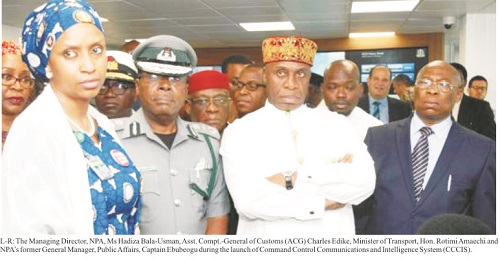Customer Service in Logistics and Distribution Management

Customer service is described as ‘fuel that drives the logistics supply chain engine’ (Coyle, et al, 1996). The core principle is to have the right product to the right customer in the correct quantity, without any damage.
It is usually very expensive to win or lose customers especially your key customers. Every organisation should have a policy of “get it right the first time” so as to avoid complaints from occurring. It is said that the cost of winning a lost customer is more expensive than getting a new customer.
High levels of customer satisfaction results from the initial dealings with the customer to the proper handling of problems.
Elements of Customer Service
This can be grouped into three, and they are pre-transaction elements, transaction elements and post transaction elements.
Pre-transaction Elements
This relates to the organisation’s policies regarding customer service. These policies must be in place before an organisation can successfully implement its customer service activities. Pre-transaction elements include:
- A written statement of customer service policy – Service standards are defined and tied to their needs. Metrics for performance should be defined as well.
- Written statement of policy given to customers – Customers will know what to expect and how to respond if expected service levels are not met.
- Organisational structure – Customers should have easy access to individuals within the organisation who can satisfy their needs and provide answers to their questions
- System flexibility – contingency plans should be built into the system so as to avoid hiccups during period of labour strikes, shortages etc
- Management services – service such as educating customers in the form of manuals, one on one\consultations should be provided free of charge
Transaction Elements
This is associated with customer service and some of the elements here include:
Stock out level – This should be well managed whenever it arises. Customer goodwill should be maintained by offering a suitable substitute, drop-shipping from another location or expediting the shipment once the out-of-stock item arrives.
Order information availability – Customers are showing increasing attention to tracking their orders because of relatively inexpensive computing power.
System accuracy – Customers expect that information they receive about order status and stock levels will be accurate
Consistency of order cycle or lead-time – The order cycle is the total time from customer initiation of the order through to receipt of the product of service by the customer.
Special handling of shipments – These are shipments that cannot be managed through the normal delivery process. The costs are usually high but it should be balanced against losing a customer.
Transhipment – This is shipping products between various distribution locations so as to avoid stock outs and possibly obsolescence.
Order Convenience – Customers prefer suppliers with user friendly ordering process
Post-transaction Elements
The post-transaction elements of customer service support the product or service after the customer has received it. These include installation, warranty, repairs and service parts, product tracking, customer complaints, claims and returns and product replacement.
Importance of Customer Service for Gaining Strategic Advantage
Logistics can play a vital role in contributing to the organisation’s competitive advantage by providing excellent customer service.
Christopher (1992) argued that the mission of logistics management is to achieve the desired levels of customer’s service and quality at the lowest possible cost, mostly through outbound logistics.
However, at the end of the 1980s, the focus was shifted from cost reduction to improvements in customer services. Improving on supply chain performances led to improvements in revenue growth and higher profitability through the gaining of market share.
How to Establish a Customer Service Strategy
It is possible to identify a number of key aspects of logistics in customer service:
- Stock availability
- Order cycle time
- Delivery reliability and time
- Delivery alternatives
- Complete delivery order
- Condition of goods
- Order status information
- Order size constraint
- Methods of ordering
Some of the methods of establishing strategies are:
- Customer reaction to stock outs
- Cost/Revenue Trade-offs
- Service Quality and Customers’ Expectations
- ABC Analysis/Pareto’s Law
- Customer Service Audits
The list is not exhaustive but it does emphasise the important role logistics plays in satisfying customer demand. The fact that there are so many different elements of customer service, as indicated, underlines the need for a company to have a clearly defined customer service policy related to the market segments with which it deals.
‘Timi OLOMOLATAN, PhD
FCIWM, FCISM, FIFFN, FCPMP, FICRM, MCILT, MCIPS, MCPMC, ACIS, MNIS, MCABA
Snr. Special Adviser, Professionalism & Org. Capability
Fortune Business School (FBS), Lekki, Lagos







